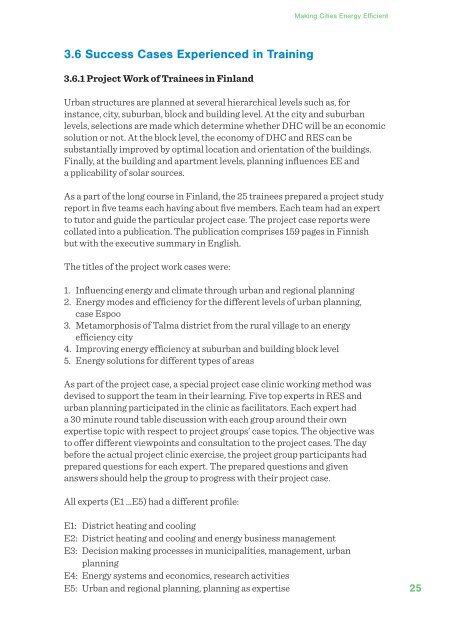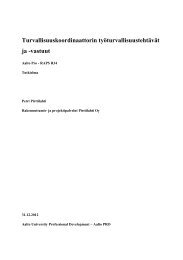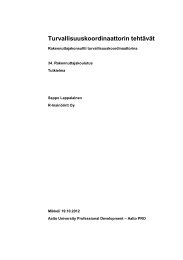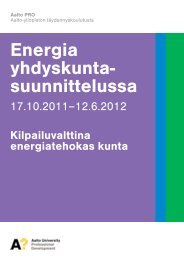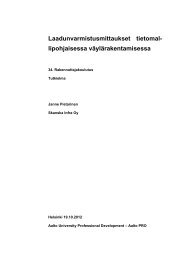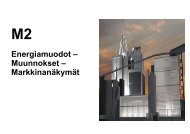Urban and Regional Planning adopting RES - Sitra
Urban and Regional Planning adopting RES - Sitra
Urban and Regional Planning adopting RES - Sitra
Create successful ePaper yourself
Turn your PDF publications into a flip-book with our unique Google optimized e-Paper software.
Making Cities Energy Efficient<br />
3.6 Success Cases Experienced in Training<br />
3.6.1 Project Work of Trainees in Finl<strong>and</strong><br />
<strong>Urban</strong> structures are planned at several hierarchical levels such as, for<br />
instance, city, suburban, block <strong>and</strong> building level. At the city <strong>and</strong> suburban<br />
levels, selections are made which determine whether DHC will be an economic<br />
solution or not. At the block level, the economy of DHC <strong>and</strong> <strong>RES</strong> can be<br />
substantially improved by optimal location <strong>and</strong> orientation of the buildings.<br />
Finally, at the building <strong>and</strong> apartment levels, planning influences EE <strong>and</strong><br />
a pplicability of solar sources.<br />
As a part of the long course in Finl<strong>and</strong>, the 25 trainees prepared a project study<br />
report in five teams each having about five members. Each team had an expert<br />
to tutor <strong>and</strong> guide the particular project case. The project case reports were<br />
collated into a publication. The publication comprises 159 pages in Finnish<br />
but with the executive summary in English.<br />
The titles of the project work cases were:<br />
1. Influencing energy <strong>and</strong> climate through urban <strong>and</strong> regional planning<br />
2. Energy modes <strong>and</strong> efficiency for the different levels of urban planning,<br />
case Espoo<br />
3. Metamorphosis of Talma district from the rural village to an energy<br />
efficiency city<br />
4. Improving energy efficiency at suburban <strong>and</strong> building block level<br />
5. Energy solutions for different types of areas<br />
As part of the project case, a special project case clinic working method was<br />
devised to support the team in their learning. Five top experts in <strong>RES</strong> <strong>and</strong><br />
urban planning participated in the clinic as facilitators. Each expert had<br />
a 30 minute round table discussion with each group around their own<br />
expertise topic with respect to project groups’ case topics. The objective was<br />
to offer different viewpoints <strong>and</strong> consultation to the project cases. The day<br />
before the actual project clinic exercise, the project group participants had<br />
prepared questions for each expert. The prepared questions <strong>and</strong> given<br />
answers should help the group to progress with their project case.<br />
All experts (E1 ...E5) had a different profile:<br />
E1: District heating <strong>and</strong> cooling<br />
E2: District heating <strong>and</strong> cooling <strong>and</strong> energy business management<br />
E3: Decision making processes in municipalities, management, urban<br />
planning<br />
E4: Energy systems <strong>and</strong> economics, research activities<br />
E5: <strong>Urban</strong> <strong>and</strong> regional planning, planning as expertise<br />
25


